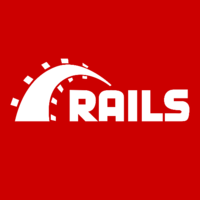Written by Kir Shatrov, Production Engineer at Shopify
Background
Shopify is a multi-channel commerce platform for small and medium businesses that lets you create a shop and sell products wherever you want: online via web store or social media and offline with a POS card reader. Shopify powers 600K merchants and serves 80K requests per second at peak.
While helping aspiring entrepreneurs to launch their stores, Shopify also holds some of the world's largest sales for the Super Bowl, Kylie Cosmetics, and celebrities like Justin Bieber and Kanye West. These "flash sales" are tricky from an engineering point of view because of their unpredictably large volumes of traffic.
My name is Kir Shatrov and I'm a Senior Production Engineer at Shopify working on the Service Patterns team. Our team owns areas like sharding, scalability and reliability of the platform. We provide guidelines and APIs on how to write software that scales by default, which essentially makes the rest of developers at Shopify our customers. Our team's motto is "make scale invisible for developers".
Engineering at Shopify
Before 2015, we had an Operations and Performance team. Around this time, we decided to create the Production Engineering department and merge the teams. The department is responsible for building and maintaining common infrastructure that allows the rest of product development teams to run their code.
Both Production Engineering and all the product development teams share responsibility for the ongoing operation of our end user applications. This means all technical roles share monitoring and incident response, with escalation happening laterally to bring in any skill set required to restore service in case of problems.
Initial architecture and stack
In 2004, Shopify’s CEO and founder, Tobi Lütke, was building out an e-commerce store for snowboarding products. Unsatisfied with the existing e-commerce products on the market, Tobi decided to build his own SaaS platform using Ruby on Rails.
At that time, Rails wasn't even 1.0 yet, and the only version of the framework was exchanged as a .zip archive by email. Tobi joined Rails creator David Heinemeier Hansson (DHH) and started contributing to Ruby on Rails while building Shopify.
Shopify is now one of the world's largest and oldest Rails apps. It’s never been rewritten and still uses the original codebase, though it has matured considerably over the past decade. All of Tobi’s original commits are still in the version control history.
The bet on Rails greatly shaped how we think at Shopify and empowered us to deliver product as fast as possible. While there are parts of the framework that sometimes make it harder to scale (e.g. ActiveRecord callbacks and code organization), many of us tend to agree with Tobi that Rails is what allowed Shopify to move from a garage startup to a public company.
The core Shopify app has remained a Rails monolith, but we also have hundreds of other Rails apps across the organization. These are not microservices, but domain-specific apps: Shipping (talks with various shipping providers), Identity (single sign on across all Shopify stores), and App Store to name a few. Managing a hundred apps and keeping them up to date with security updates can be tough, so we've developed ServicesDB, an internal app that keeps track of all production services and helps developers to make sure that they don't miss anything important.
 ServicesDB in Action
ServicesDB in Action
ServicesDB keeps a checklist for each app: ownership, uptime, logs, on-call rotation, exception reporting, and gem security updates. If there are problems with any of those, ServicesDB opens a GitHub issue and pings owners of the app to ask them to address it. ServicesDB also makes it easy to query the infrastructure and answer questions like, “How many apps are on Rails 4.2? How many apps are using an outdated version of gem X? Which apps are calling this service?”.
Our current stack
As is common in the Rails stack, since the very beginning, we've stayed with MySQL as a relational database, memcached for key/value storage and Redis for queues and background jobs.

In 2014, we could no longer store all our data in a single MySQL instance - even by buying better hardware. We decided to use sharding and split all of Shopify into dozens of database partitions.
Sharding played nicely for us because Shopify merchants are isolated from each other and we were able to put a subset of merchants on a single shard. It would have been harder if our business assumed shared data between customers.
The sharding project bought us some time regarding database capacity, but as we soon found out, there was a huge single point of failure in our infrastructure. All those shards were still using a single Redis. At one point, the outage of that Redis took down all of Shopify, causing a major disruption we later called “Redismageddon”. This taught us an important lesson to avoid any resources that are shared across all of Shopify.
Over the years, we moved from shards to the concept of "pods". A pod is a fully isolated instance of Shopify with its own datastores like MySQL, Redis, memcached. A pod can be spawned in any region. This approach has helped us eliminate global outages. As of today, we have more than a hundred pods, and since moving to this architecture we haven't had any major outages that affected all of Shopify. An outage today only affects a single pod or region.

As we grew into hundreds of shards and pods, it became clear that we needed a solution to orchestrate those deployments. Today, we use Docker, Kubernetes, and Google Kubernetes Engine to make it easy to bootstrap resources for new Shopify Pods. On the load balancer level we leverage Nginx, Lua and OpenResty which allow us to write scriptable load balancers.
The client-side stack of Shopify Admin has been a long journey. It started with HTML templates, jQuery and prototype.js. We moved to Batman.js, our in-house Single-Page-Application framework (SPA), in 2013. Then, we re-evaluated our approach and moved back to statically rendered HTML and vanilla JavaScript. As the front-end ecosystem matured, we felt that it was time to rethink our approach again. Last year, we started working on moving Shopify Admin to React and TypeScript.
Many things have changed since the days of jQuery and Batman. JavaScript execution is much faster. We can easily render our apps on the server to do less work on the client, and the resources and tooling for developers are substantially better with React than we ever had with Batman.
Another very notable difference is that now we have a much better solution for ensuring business logic does not leak into the client — GraphQL. The Admin becomes just another GraphQL client and follows the same patterns established by the mobile apps: no data persistence, no reliance on the server for anything that needs to be shared between clients, and extremely efficient fetching of resources for a view.
How we build, test, and deploy
The Shopify monolith has around 100K unit tests. Many of those involve heavy ORM calls, so they aren't very fast. To keep the shipping pipeline fast, we've massively invested in our CI infrastructure.
We use BuildKite as a CI platform. What makes BuildKite unique is that it lets you run tests in your own way, on your own hardware while BuildKite orchestrates builds and provides user interface.

The build of our monolith takes 15-20 minutes and involves hundreds of parallel CI workers to run all 100k tests. Parallel test workers allow us to keep shipping. Otherwise, a single build could take days. We have hundreds of developers shipping new features and improvements every day, and it’s crucial that we keep the continuous integration pipeline fast.
When the build is green, it's time to deploy changes to production. We don't practice staging or canary deploys, instead we rely on feature flags and fast rollbacks in case something goes wrong.

ShipIt, our deployment tool, is at the heart of Continuous Delivery at Shopify. ShipIt is an orchestrator that runs and tracks progress of any deploy script that you provide for a project. It supports deploying to Rubygems, Pip, Heroku and Capistrano out of the box. For us, it's mostly kubernetes-deploy or Capistrano for legacy projects.
 A ShipIt Slack notification sent when your code is being deployed
A ShipIt Slack notification sent when your code is being deployed
We use a slightly tweaked GitHub flow, with feature development going in branches and the master branch being the source of truth for the state of things in production. When your PR is ready, you add it to the Merge Queue in ShipIt. The idea behind the Merge Queue is to control the rate of code that is being merged to master branch. In the busy hours, we have many developers who want to merge the PRs, but at the same time we don't want to introduce too many changes to the system at the same time. Merge Queue limits deploys to 5-10 commits at a time, which makes it easier to identify issues and roll back in case we notice any unexpected behaviour after the deploy.
We use a browser extension to make Merge Queue play nicely with the Merge button on GitHub:

Both ShipIt and kubernetes-deploy are open source, and we've heard quite a few success stories from companies who have adopted our flow.
Next Challenges
All systems at Shopify have to be designed with the scale in mind. At the same time, it still feels like you're working on a classic Rails app. The amount of engineering efforts put into this is incredible. For a developer writing a database migration, it looks just like it would for any other Rails app, but under the hood that migration would be asynchronously applied to a 100+ database shards with zero downtime. This story is similar for any other aspect of our infrastructure, from CI and tests to deploys.
In Production Engineering, we've put a lot of efforts to migrate our infrastructure to Kubernetes. Some approaches and design decisions had to be evaluated as they were not ready for cloud environments. At the same time, many of those investments into Kubernetes have already started to pay off. What took me days of writing Chef cookbooks before, now is a matter of a couple of changes in Kubernetes' YAML. I expect that our Kubernetes foundation will mature, and unlock us even more possibilities to scale.
With tools like Semian and Toxiproxy, we've done great job at shaping our monolith towards high reliability and resiliency. At the same time, we’re approaching one hundred other production services running at the company — most of them using Rails. With a tool like ServicesDB, we can verify that all of them are using the same patterns as the monolith, spreading the lessons we learned from a decade of operating Rails apps at scale.
Many of these services also need to talk to each other in some way, and how they do it is currently up to them. Some services communicate via a message log like Kafka and some use a REST API over HTTP. Lately, we've been looking into options for Shopify-wide RPC and Service Mesh. I expect that over the next year, we'll define how applications will communicate on our platform in a way that will be resilient and scalable by default.
Like the sound of this stack? Shopify is hiring. Come help us to make commerce better for everyone. Or join Production Engineering, and help us continue to evolve the stack that makes commerce better at Shopify than anywhere else in the world.
































